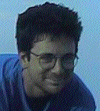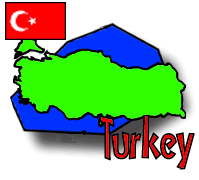Tech Fact of the Day: Plundered Turkish artifacts
Person of the Day: Greek gods
- Zeus: head of the gods, spiritual father of gods and people
- Hera: Zeus' wife, queen of heaven, guardian of marriage
- Hephaestus: god of fire and metalworkers, also the gods' artisan who made their armor, weapons, and jewelry
- Athena: goddess of the Greek cities, of industry and the arts, of wisdom, and of war; patron of the agricultural arts and of the crafts of women, especially spinning and weaving; gave people the gifts of the plow, the flute, and the arts of taming animals, building ships, and making shoes; often associated with birds, especially the owl.
- Apollo: god of agriculture, light (the sun), truth, poetry, music, and prophesy; special protector of young men; taught humans the art of healing
- Artemis: goddess of hunting and wild animals (especially bears), childbirth, nature, the harvest, and the moon; special protector of young women
- Ares: god of war
- Aphrodite: goddess of love, beauty
- Hestia: goddess of the hearth, believed to watch over all sacrificial altar fires
- Hermes: god of commerce; messenger of the gods and special courier of Zeus; ruler of science and invention; protector of traders, herds, sports arenas; believed to possess magic powers over sleep and dreams; responsible for good luck and wealth
- Poseidon: ruler of the sea
- Demeter: goddess of corn and the harvest
- Hades: ruler the underworld
- Dionysus: god of vegetation, wine, good cheer, and pleasure
- Hera: Zeus' wife, queen of heaven, guardian of marriage
Place of the Day: Coast of Golden Sand
Group Dispatch, February 19-20

Questions? Ask Ethan ![]() !
!
Return to Fast Facts
 |
 |
 |
 |
 |
|
Itinerary/ Journal |
Discussions |
About Turkey |
eDscape Projects |
Scrapbook |
|
|
|
|
|
|
Internet access while in Turkey was provided by Raksnet. |
Copyright 1997-2004 BikeAbout. All rights reserved.

